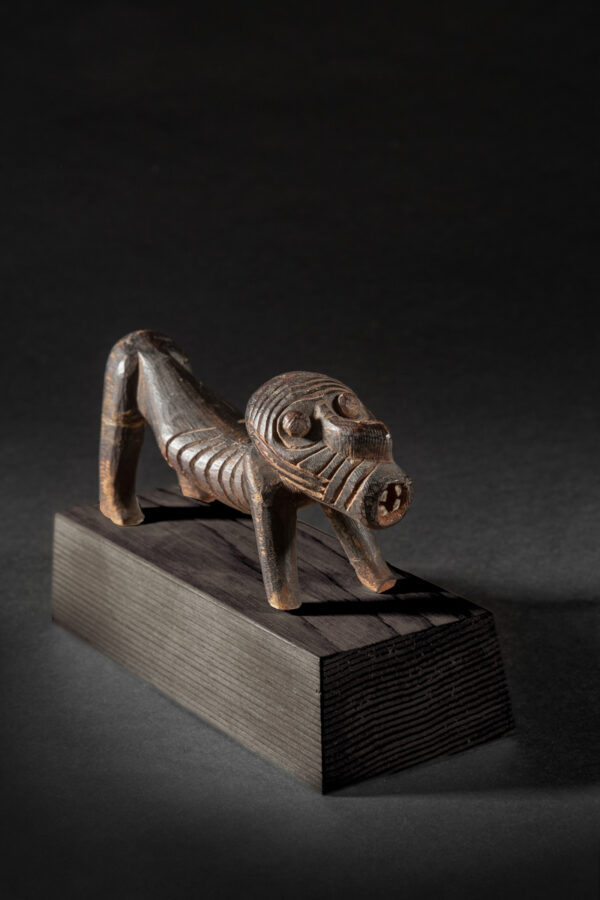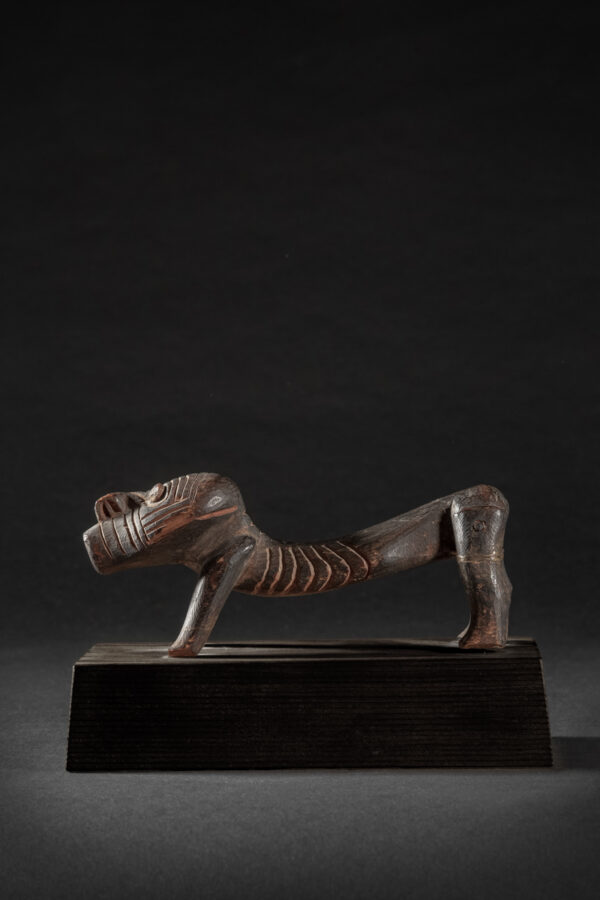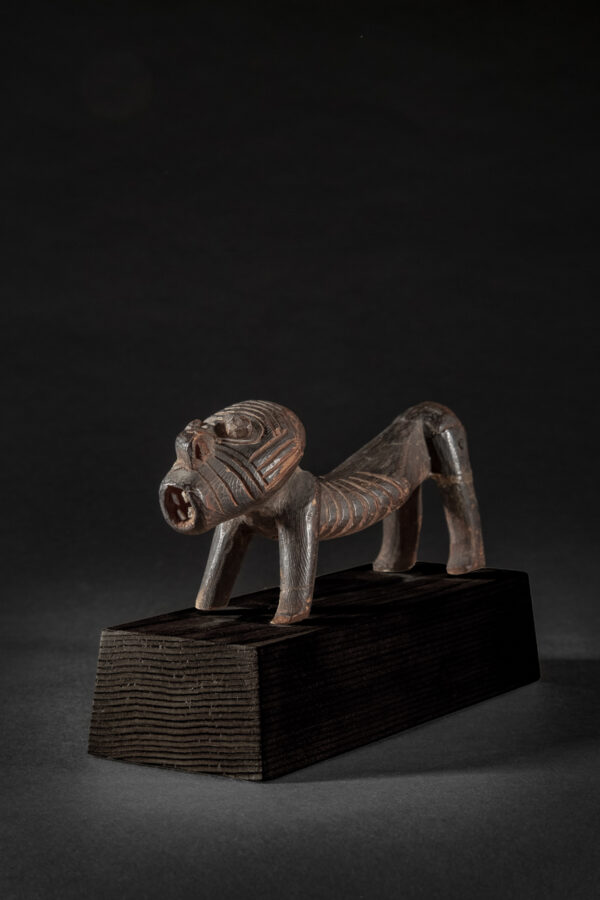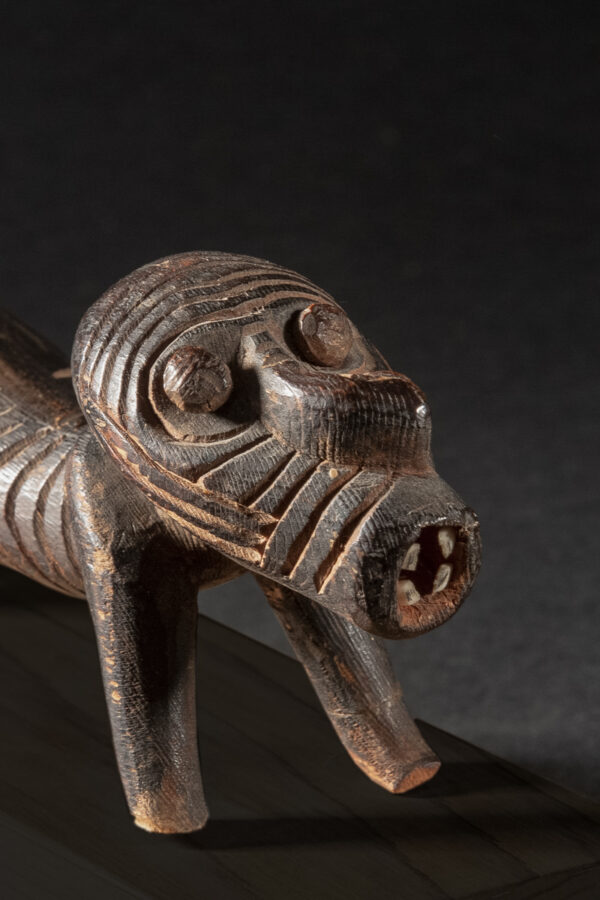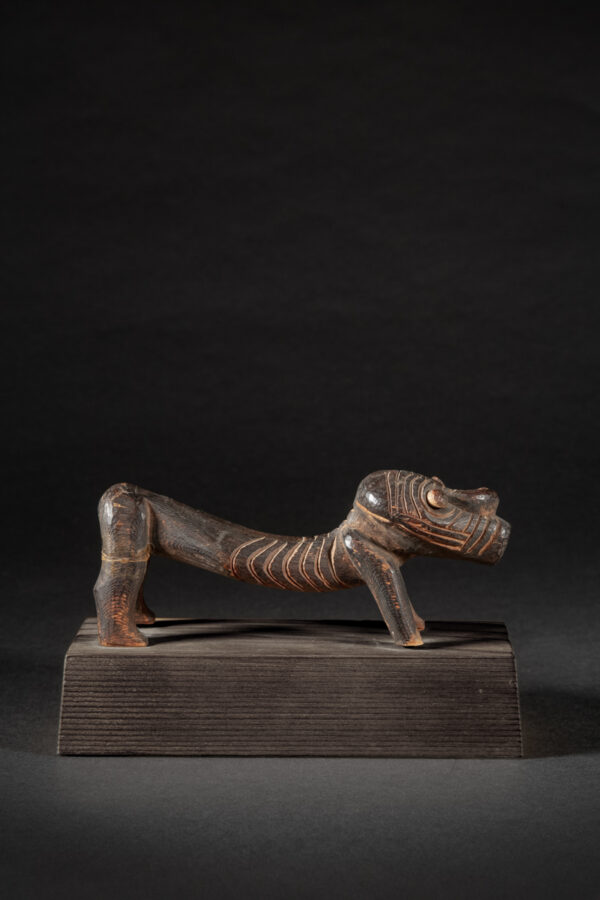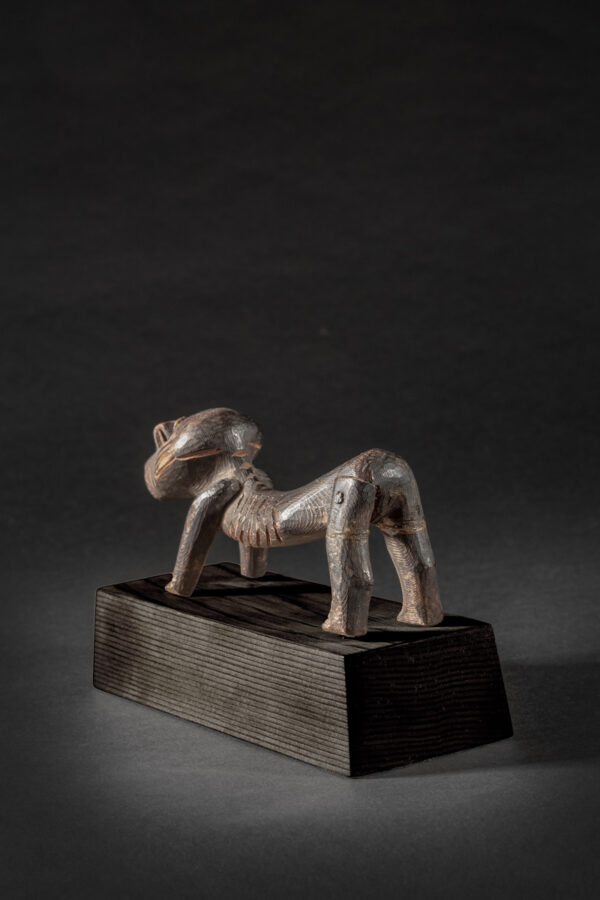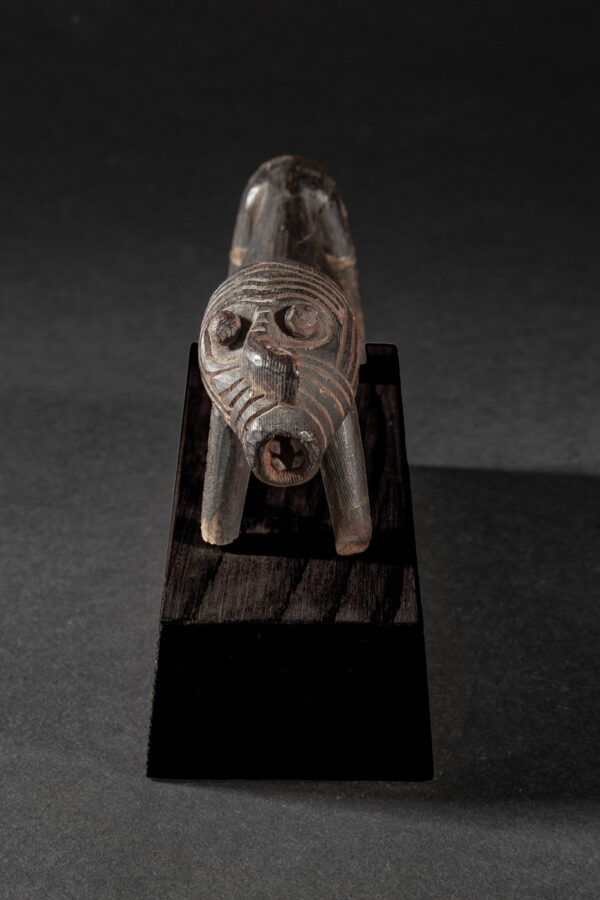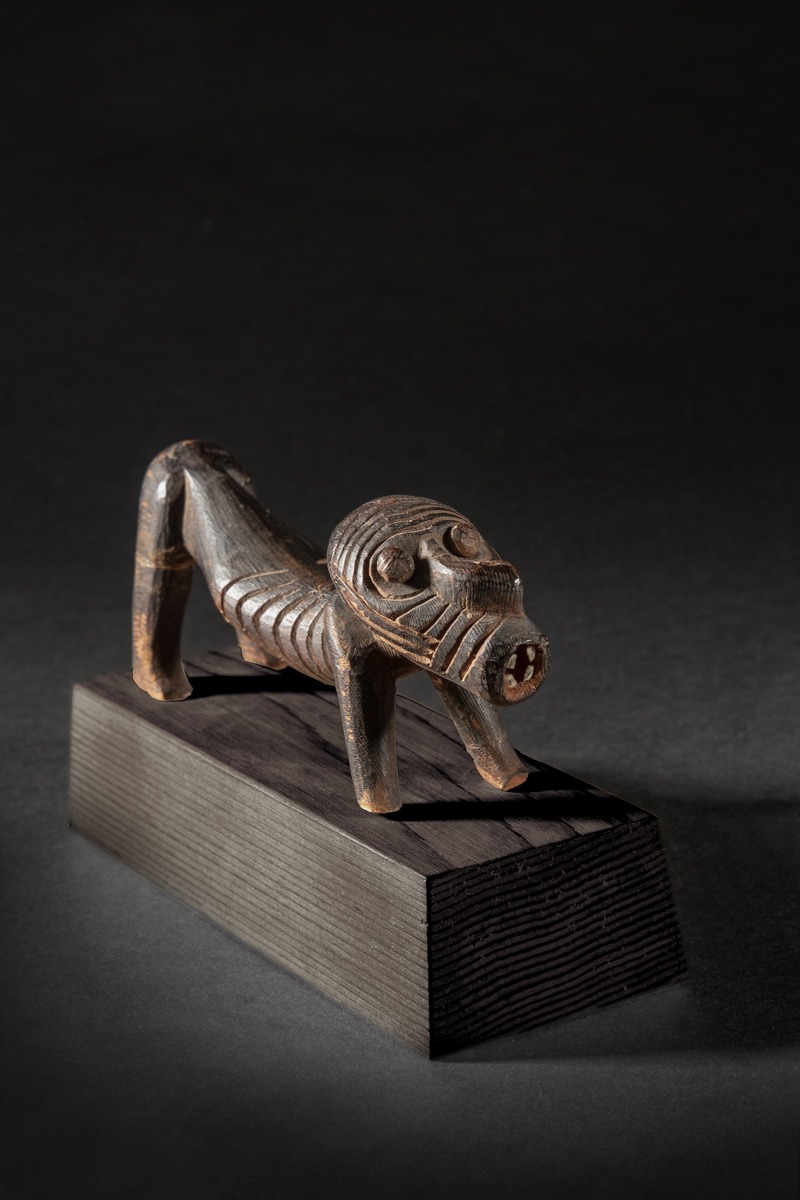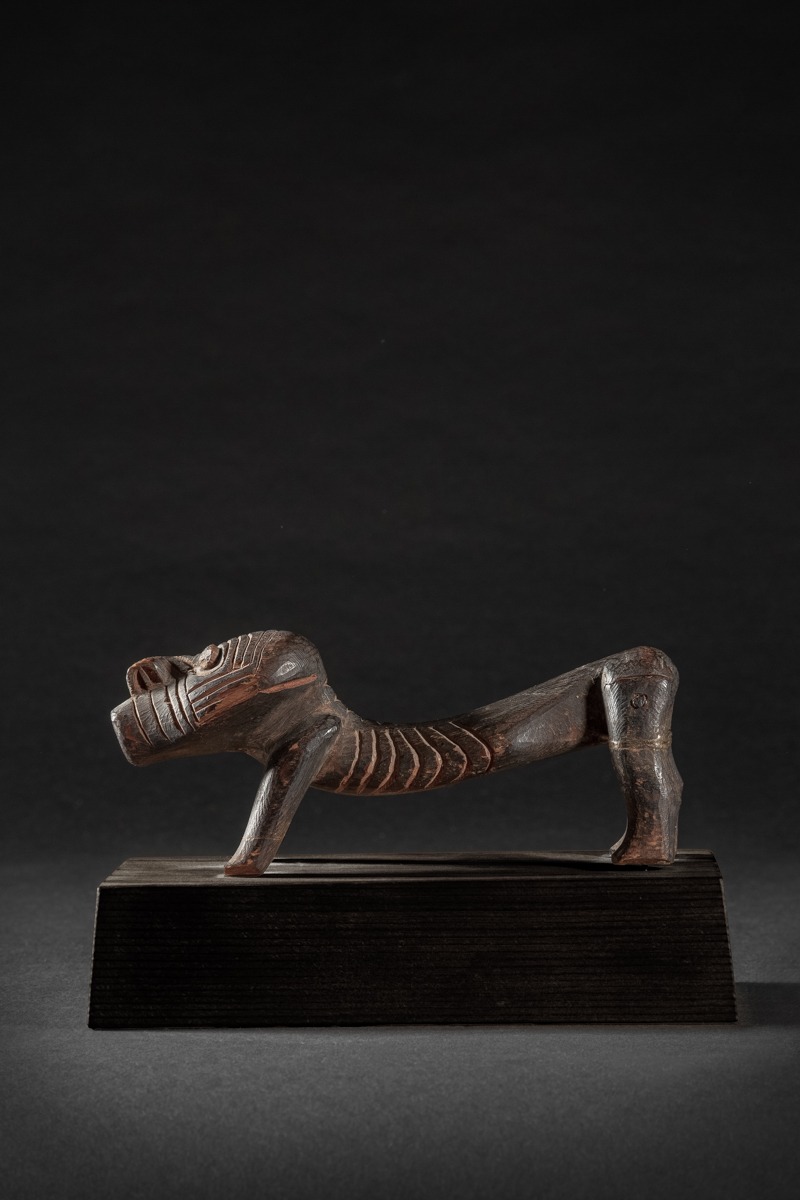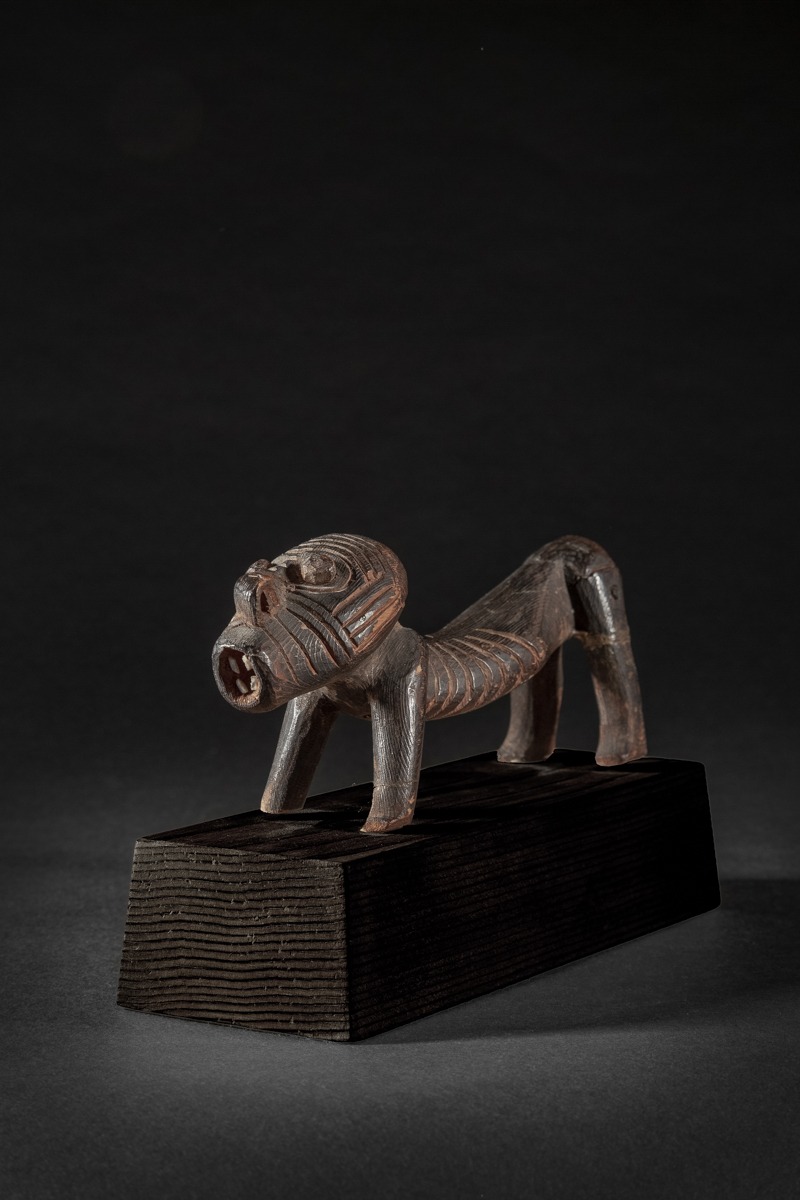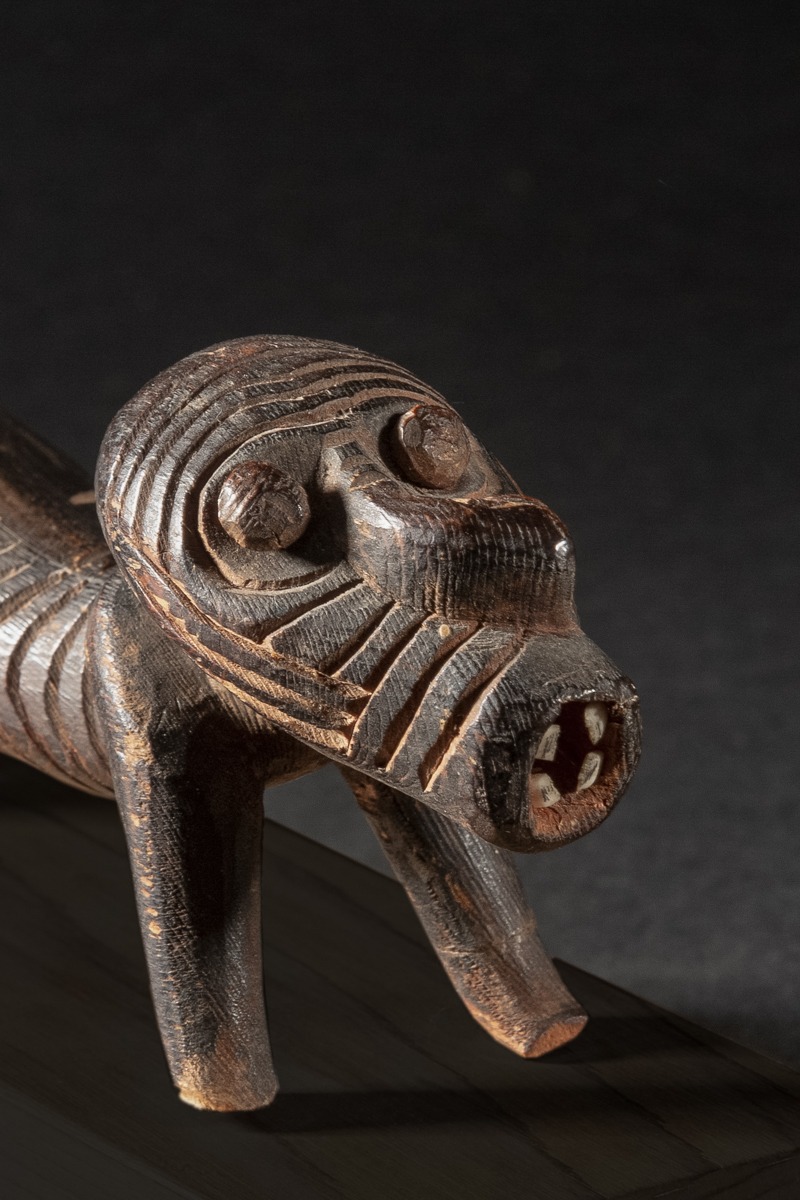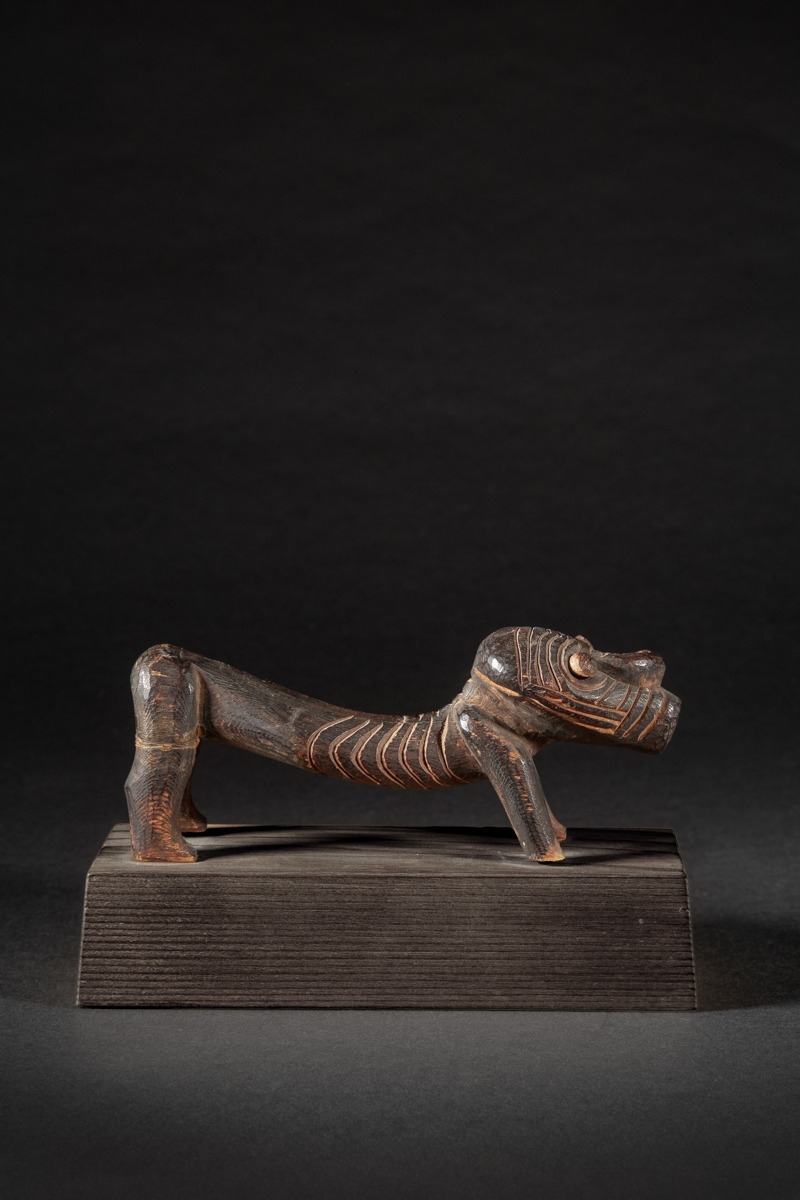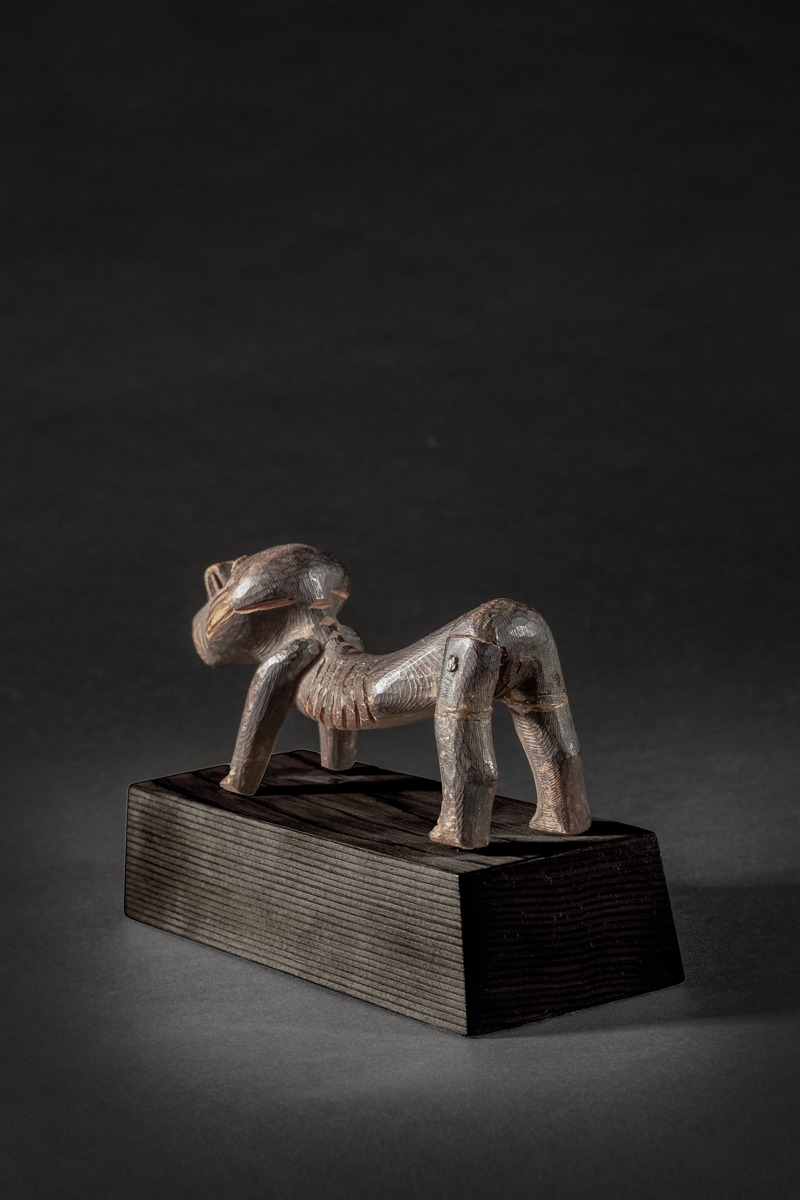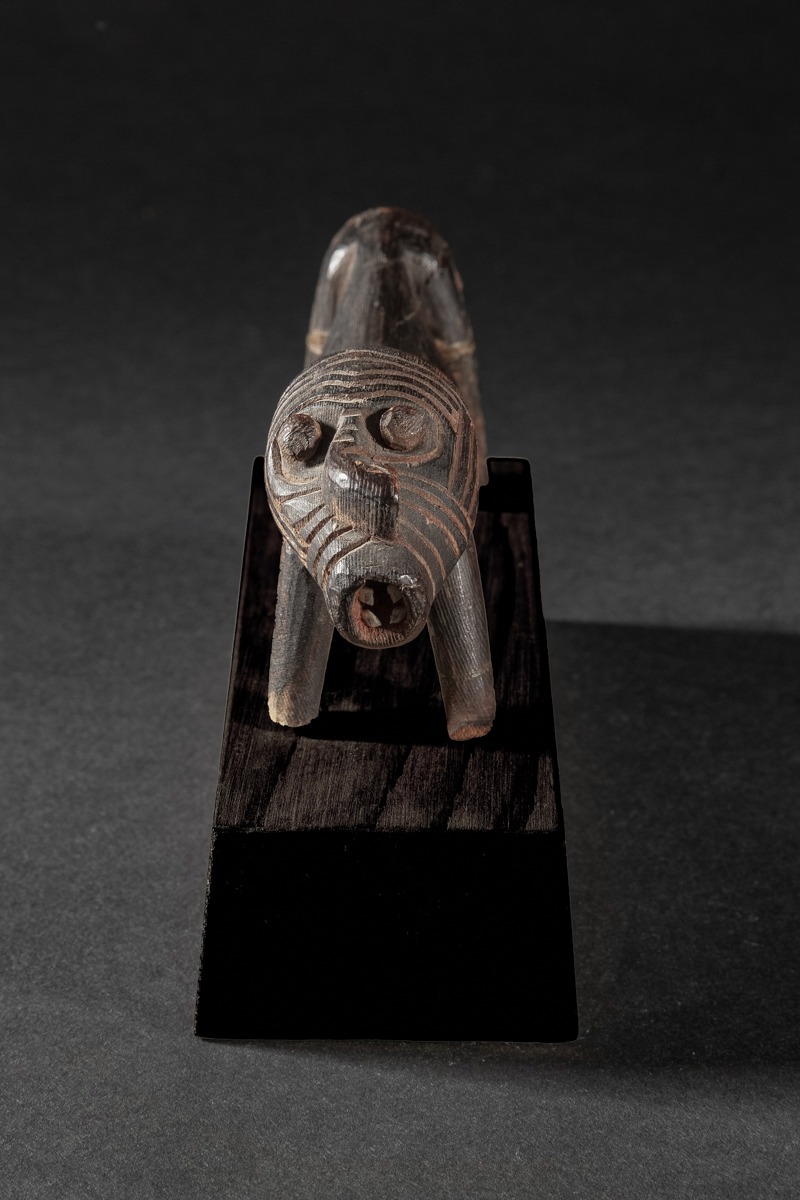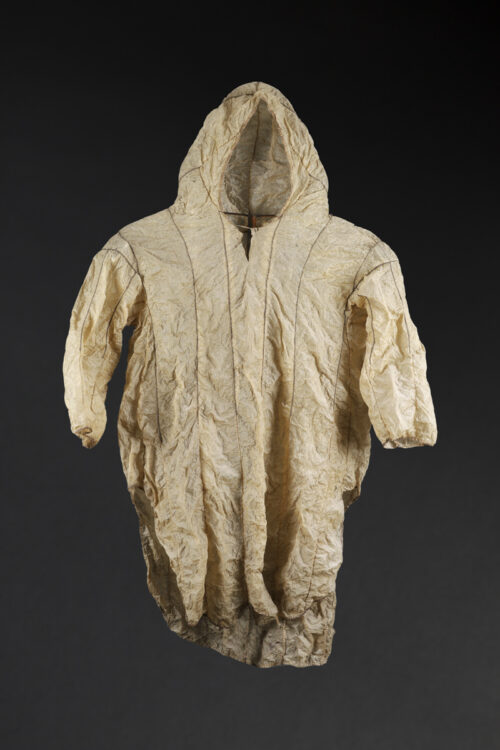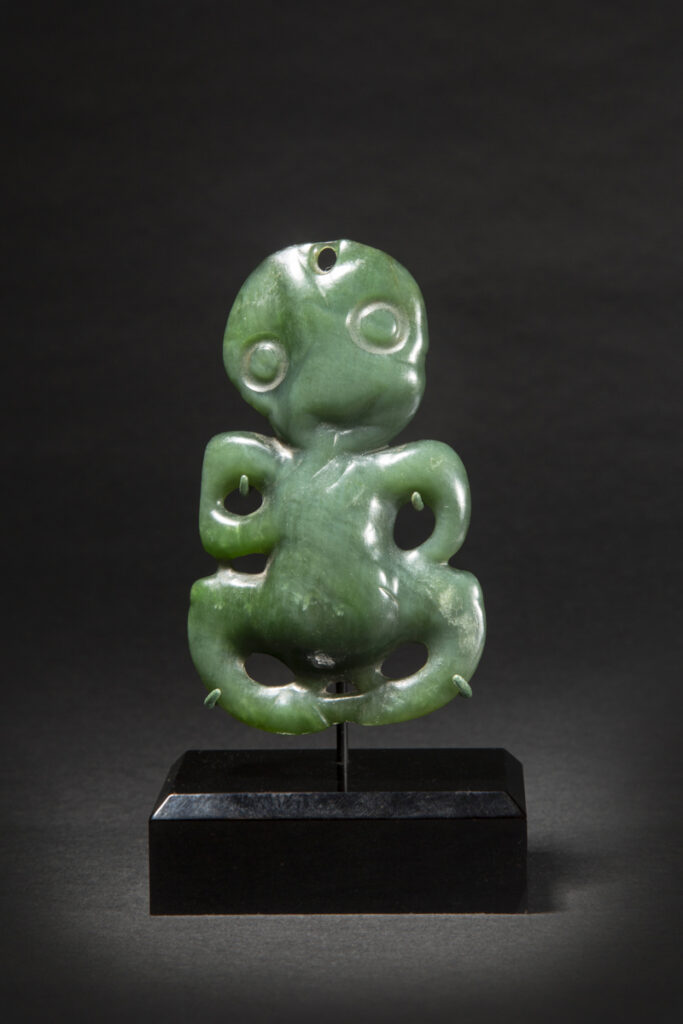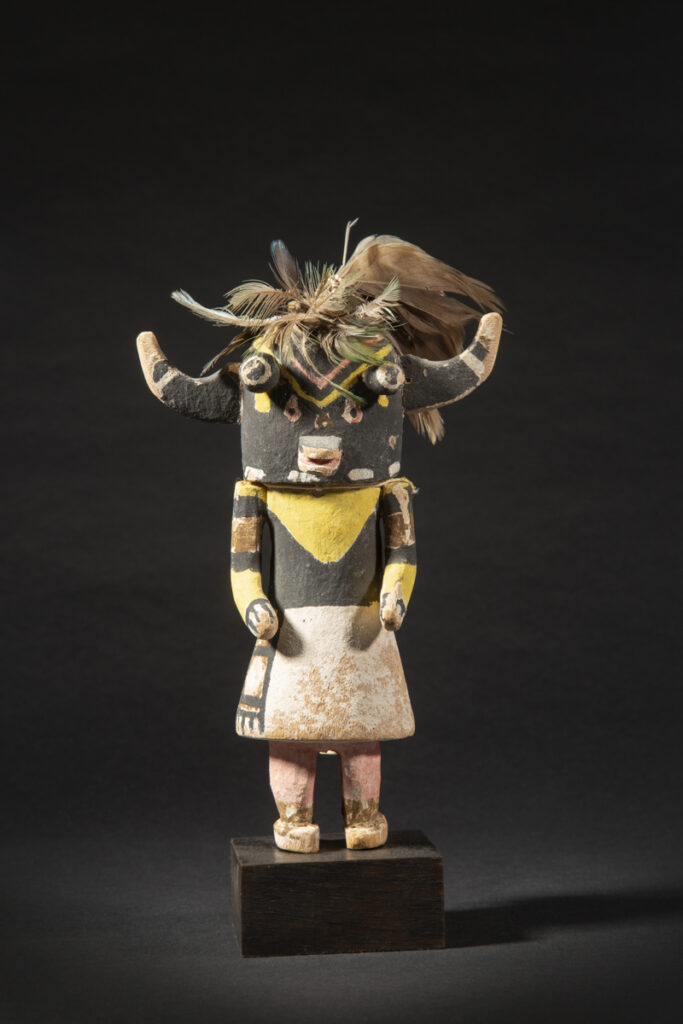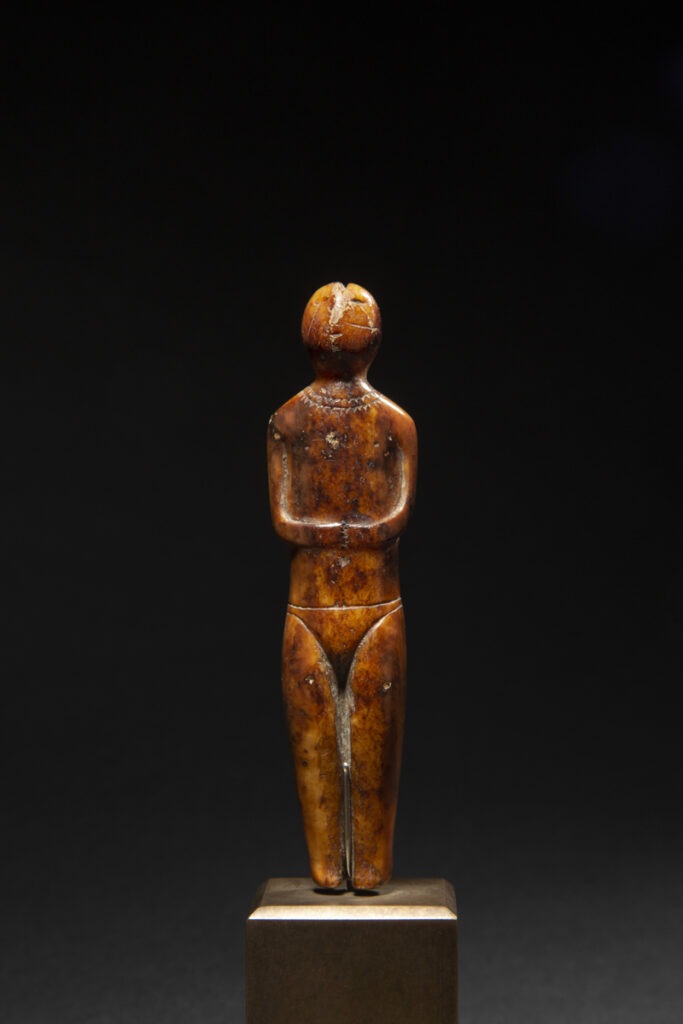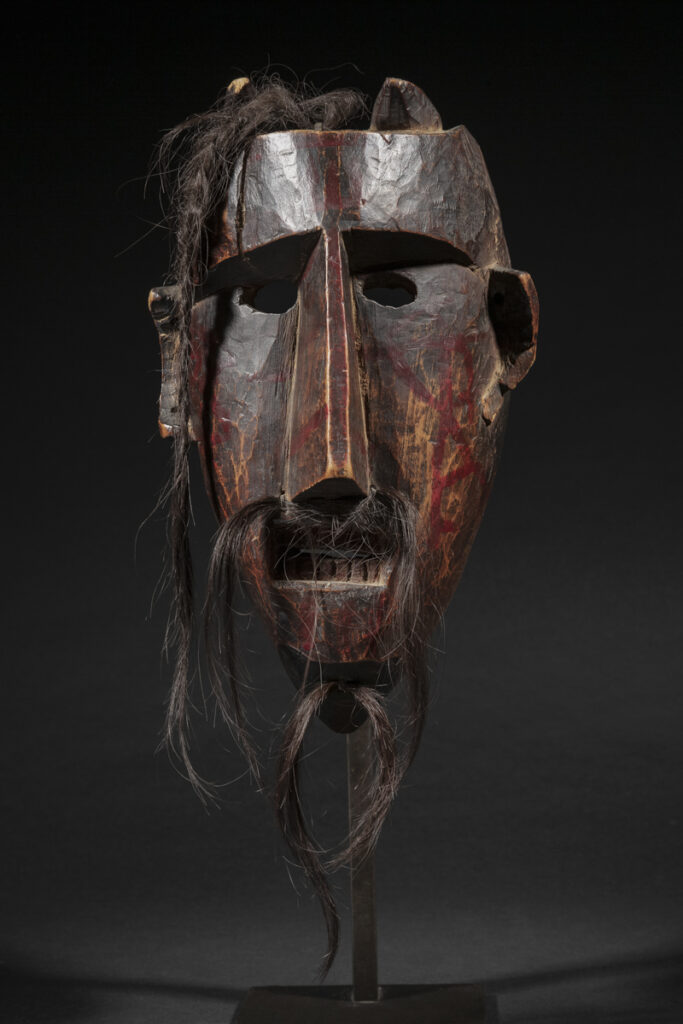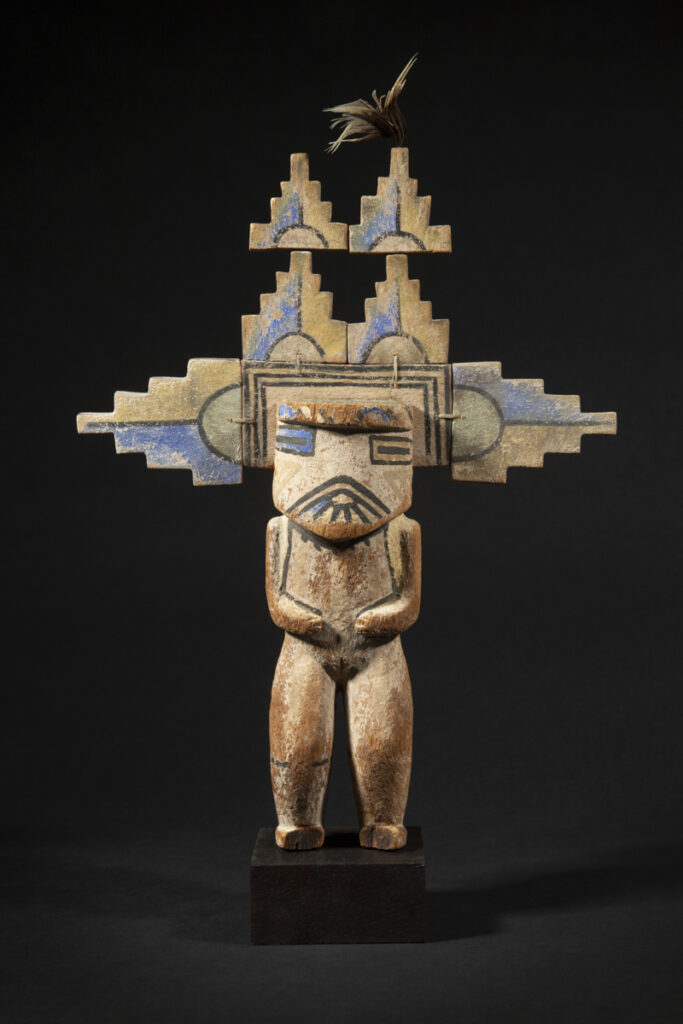North America | Greenland
Tupilak
Greenland
Tupilak shamanic figure
19th century
Carved wood and bone
Height: 15 cm – 6 in.
Provenance
Collected by Richard Bøgvad in 1932-1933 during Knud Rasmussen’s 7th Thule Expedition
Collection Bøgvad, Denmark
Ex Dorotheum, Vienna, 15 Dec. 2020, lot 93
Ex collection Philipp Konzett, Vienna, acquired at the above sale
Sold
As noted by Richard Margolis, based on Robert Petersen’s essay “Havd er en Tupilak” (“What is a Tupilak”, Nov. 1967), for visitors to Greenland, the name "tupilak" (or tupilaq) signifies a small, grotesque carved figure carved. It usually has a body, head, and four limbs, but resembles several animals at the same time. It often has a distorted face, and not infrequently a skeletal ornamentation.
The tupilak is a spiritual entity summoned by the shaman to ensure its benevolence or, at the very least, its neutrality towards humans. In the 19th century and early 20th century, carved tupilak figures served as a privileged medium for telling stories and transmitting the myths and shamanic practices of Greenland.
The Tupilak figure presented here stands out for its evocative power and antiquity. It was field-collected in 1932-1933 by geologist Richard Bøvgad (1897-1952), a member of the renowned Sixth and Seventh Thule Expeditions led by Dr. Knud Rasmussen to southeast Greenland.
The tupilak is a spiritual entity summoned by the shaman to ensure its benevolence or, at the very least, its neutrality towards humans. In the 19th century and early 20th century, carved tupilak figures served as a privileged medium for telling stories and transmitting the myths and shamanic practices of Greenland.
The Tupilak figure presented here stands out for its evocative power and antiquity. It was field-collected in 1932-1933 by geologist Richard Bøvgad (1897-1952), a member of the renowned Sixth and Seventh Thule Expeditions led by Dr. Knud Rasmussen to southeast Greenland.
Explore the entire collection
